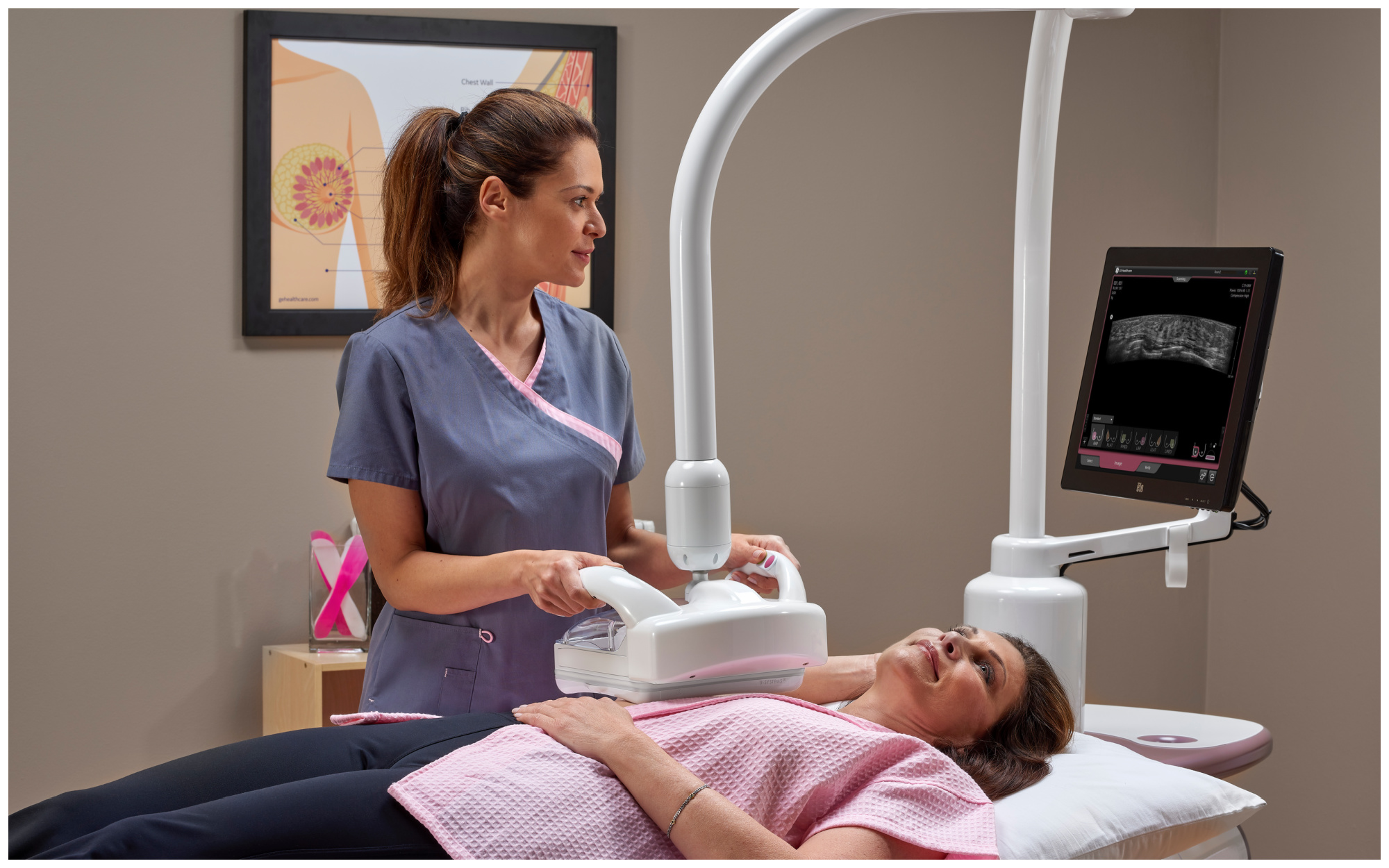Breast cancer is the most common cancer in women, apart from skin cancers. It’s also one of the most treatable, especially if caught early. Baptist Health Breast Center-Fort Smith now offers a breast cancer screening tool specifically designed to detect cancer in women with dense breast tissue that traditional mammograms may miss.
The Breast Center is the first in the River Valley to offer the Invenia ABUS, or Automated Breast Ultrasound System. The system is designed to enhance the consistency, reproducibility, and sensitivity of breast ultrasound, demonstrating a thirty-five-point-seven percent improvement in cancer detection in women with dense breasts.
What is Dense Breast Tissue?
The term dense breast tissue refers to the appearance of the breast on a mammogram.
“The breasts are composed of different types of tissue including milk glands, milk ducts, supportive tissue and fatty tissue,” said Dr. John Faircloth, a radiologist with Baptist Health. “Dense breasts have more glands, ducts and supportive tissue than fatty tissue.”
Once a woman undergoes a mammogram, a radiologist will evaluate the images and assign a level of breast density into one of four categories:
- A: Almost entirely fatty – breasts are composed of mostly fatty tissue.
- B: Scattered areas of fibro glandular density – there are a few scattered areas of density, but the majority is non-dense, fatty tissue.
- C: Heterogeneously dense – some areas of non-dense, fatty tissue, but the majority is dense tissue.
- D: Extremely dense – nearly all the breast is composed of dense tissue.
“Women who fall into categories C and D are considered to have dense breasts,” Dr. Faircloth said. “The majority of women will have breast densities in categories B and C.”
Statistics show more than forty percent of women in the U.S. have dense breast tissue which can mask the appearance of tumors and limit the performance of mammography. ABUS can see through dense tissue and find small cancers that may not be seen on mammography because they are hidden by normal, dense breast tissue.
What Causes Dense Breast Tissue?
We don’t know why some women have dense breasts and some don’t. But some factors that do affect breast density include age, pregnancy and lactation, weight loss and hormone replacement therapy. Certain types of breast cancer, such as inflammatory breast cancer, can also increase the density of the breasts.
The only way to truly determine breast density is through mammograms. All mammography reports issued at Baptist Health indicate the patient’s breast tissue density and are available through the MyChart patient portal.
What to Expect with ABUS
During an ABUS screening, a layer of lotion is applied to the breast, and then a scanner is firmly positioned on your breast while you lie on your back to acquire the images. The exam takes approximately fifteen minutes and provides your doctor with clear 3D ultrasound images.
ABUS is used in addition to, not in place of, Tomosynthesis or 3D mammography for women with dense breasts. If you have dense tissue, it may be recommended to have an ultrasound each time you have a mammogram. Often, both can be scheduled the same day.
“ABUS is a supplementary technique that can be used for women whose breasts are considered dense,” Dr. Faircloth said. “It allows radiologists to get a better look at the dense tissue to determine if cancer may be ‘hiding’ amongst the normal tissue.”
If something is detected either on a mammogram or a breast ultrasound, a patient may be called back for additional imaging or a biopsy. “I understand how scary it may be for women to be called back for additional images or a biopsy,” Dr. Faircloth said. “The biopsies we do at Baptist Health Breast Center-Fort Smith are minimally invasive, do not require sedation and typically take 2-3 business days for those results.”
Why Screening Is Important
Regular mammography screening helps with early detection and is associated with reduced breast cancer mortality for women. “The earlier breast cancer is detected, the better the treatment options,” said Audra Jackson, MD, of Baptist Health Family Clinic-Southpointe.
Yearly screening mammograms are recommended for women of average risk starting at age forty, according to the National Comprehensive Cancer Network (NCCN) and the Society of Breast Imaging (SBI). Women at high risk of breast cancer may benefit from mammography starting at thirty years of age or earlier.
Dr. Jackson says they may also benefit from supplemental screening such as ABUS, breast MRI or genetic testing. “A family history of breast cancer in a first-degree relative is one factor that increases a woman’s risk of developing breast cancer, but there are other factors, too,” Dr. Jackson said.
Some of those factors, such as lack of exercise, smoking cigarettes, and eating certain foods can be altered by making lifestyle choices to help reduce your risk of breast cancer. It’s important to talk to your primary care provider or gynecologist about appropriate screenings, or if you notice any changes in your breasts such as lumps, dimpling, skin pigmentation or discharge from the nipple. Schedule your appointment today!
To schedule a mammogram at Baptist Health or learn more about your risk for breast cancer, visit BaptistHealthMammo.com or call 1-888-BAPTIST.




